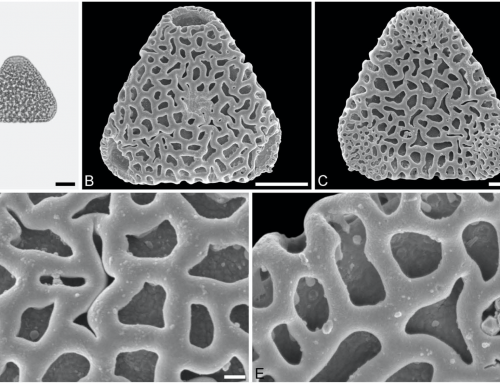Authors: Johannes M. Bouchal, Reinhard Zetter, Friðgeir Grímsson, Thomas Denk
The early Cenozoic was a key period of evolutionary radiation in Fagaceae. The common notion is that species thriving in the modern summer-dry climate of California originated in climates with ample summer rain during the Paleogene. We investigated in situ and dispersed pollen of Fagaceae from the uppermost Eocene Florissant fossil beds, Colorado, United States, using a combined light and scanning electron microscopy approach. Pollen types of Castaneoideae with affinities to modern Castanea, Lithocarpus, and Castanopsis were recognized. Pollen of the extinct genus Fagopsis represents a derived type of Castaneoideae pollen. Infrageneric groups of Quercus were well represented, including pollen of Group Protobalanus. The taxonomic diversity of Fagaceae and of the total plant assemblage indicates a mosaic of microclimates, that range from pronounced to weakly seasonal climates and depend on slope aspect and elevation. Continental climatic conditions may have triggered the evolution of sclerophyllous leaves and adaptive radiation in Quercus and other taxa thriving today under distinctly summer-dry and winter-dry climates. Vegetation types similar to modern vegetation belts of the Coastal Ranges (chaparral, nemoral conifer forest) were established in the Front Range in the late Eocene. Coeval plant assemblages from the Coastal Ranges of California indicate distinctly subtropical, moist climates. Hence, characteristic elements found today in the summer-dry and winter-dry climates of Pacific North America (Quercus Group Protobalanus, Notholithocarpus) may opportunistically have dispersed into their modern ranges later in the Cenozoic. This scenario is in contrast to the evolution and migration patterns of their western Eurasian Mediterranean counterparts (Quercus Group Ilex).




